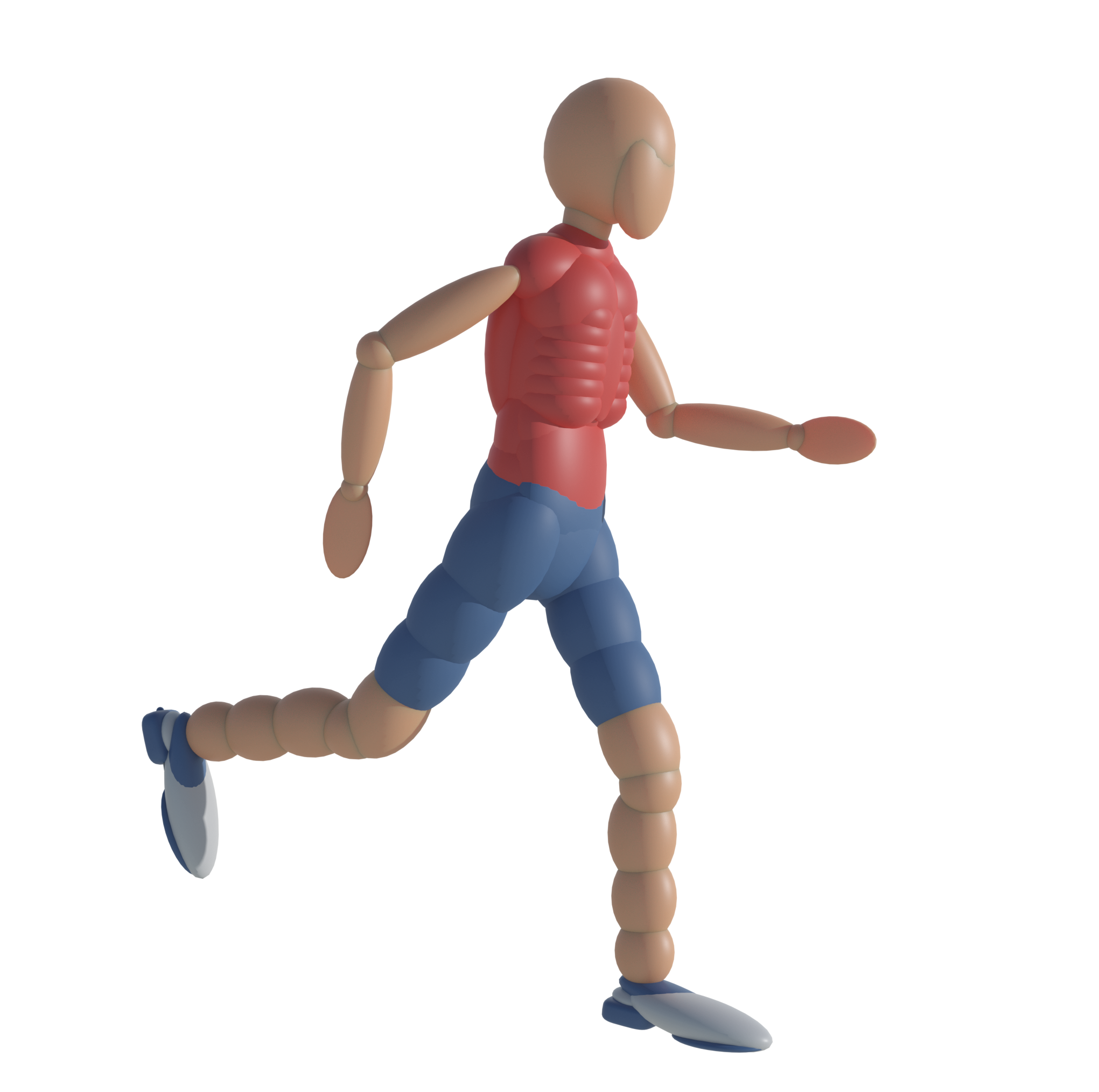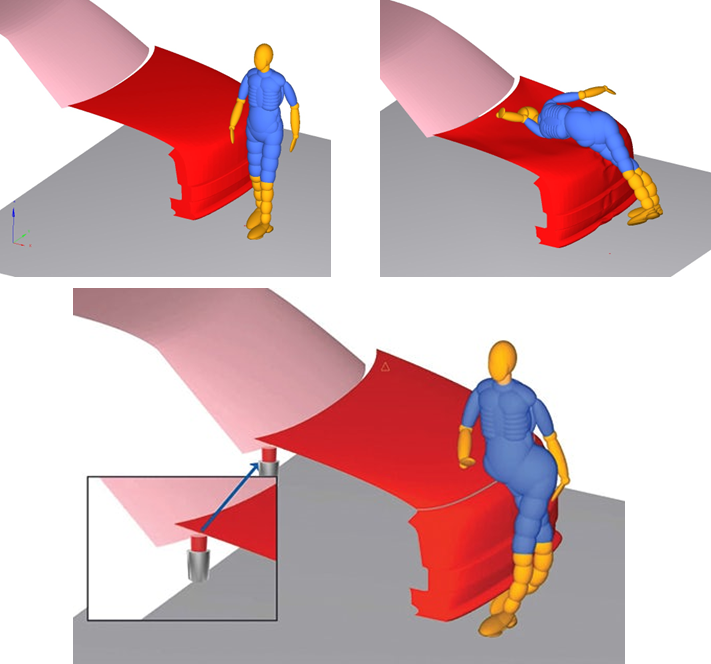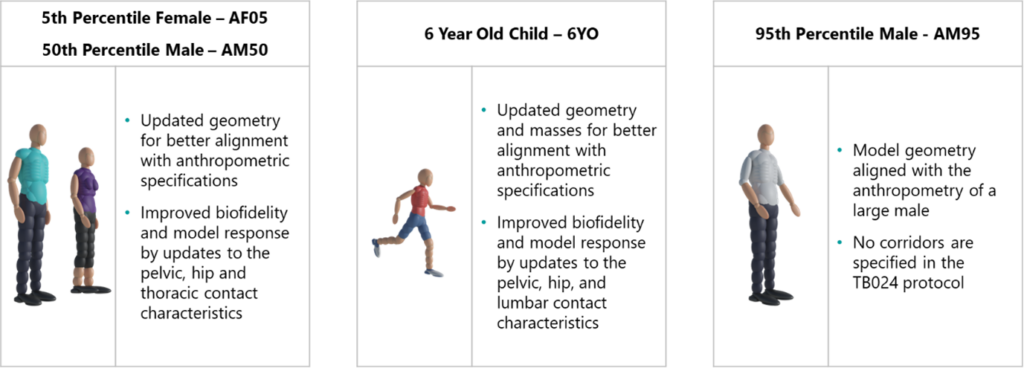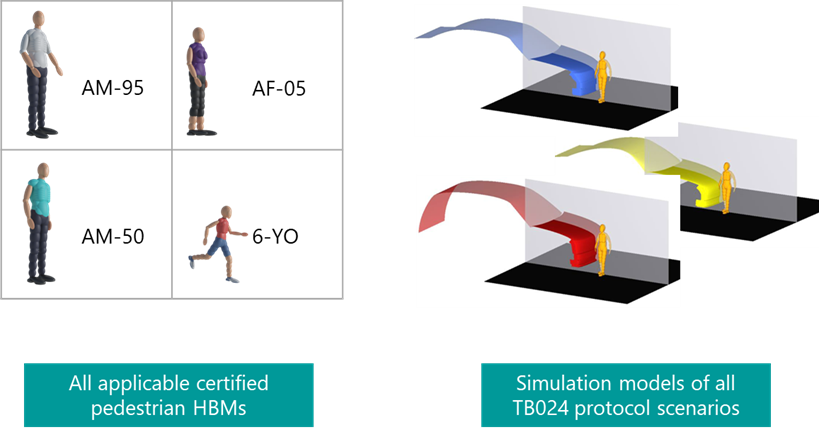Fast-Tracking Pedestrian Safety with Simcenter Madymo: Human body Models’ Updates

Lives are at risk
Globally pedestrian safety is a concern. According to the World Health Organization (WHO), there are currently 1.35 million road traffic deaths worldwide and a further 50 million people are injured each year. 50% of the fatalities are among vulnerable road users; the pedestrians, cyclists, and motorcyclists.
The loss of, or injury to a loved one is, in any case, tumultuous, but there is a larger underlying economic cost which impacts not just families but nations as a whole. Medical treatment, facilities and productivity tie up about 3% of a country’s Gross Domestic Product (GDP). It is estimated that fatal and non-fatal road traffic occurrences cost $1.8 trillion to the world’s economy each year.

What is being done to improve pedestrian safety
The United Nations (UN) General Assembly has set a target of reducing the number of road traffic deaths and injuries by 50% by 2030 in a Safe System Approach (A/RES/74/299) which among many other measures, means to improve pedestrian safety and make cars safer for occupants.
Car makers find themselves at the forefront of these initiatives and run the safety gauntlet through a rigorous program of crash tests. The words “crash test” immediately conjure up images of dummies that cost up to a million dollars each. A much used and well-favored scenario involves simulations with computer models of these dummies. This gets results much more efficiently and regulations even allow the physical test to be bypassed when a certain set of accredited, compliant, or certified virtual models are used under certain conditions.
Now welcome to the world of Simcenter Madymo which excels in simulations with the use of models of dummies and is used by leading organisations such as EDAG Group
Simcenter Madymo
Simcenter Madymo is a safety centric CAE multi-physics software that has been used by engineers for decades. This solver comprises of modeling techniques like multibody dynamics (MBD), finite element analysis (FEA) and computational fluid dynamics (CFD). It never compromises on accuracy and yet finely balances speed and detail. Users deploy Simcenter Madymo to virtually assess a vast number of safety critical scenarios in a fraction of the time than it would take using a completely FEA based toolset.

Simcenter Madymo includes a library of validated dummy models that can be used for virtually evaluating various situations. It also offers a suite of human body models (HBMs) which includes a family specifically for simulating pedestrian protection.
Human Body Models
Euro NCAP has recognized the value of HBMs in simulations that assess Deployable Pedestrian Protection Systems (DPPS) in addition to physical tests. An example of a DPPS is the active bonnet (hood) that is deployed as soon as an imminent impact with a pedestrian is sensed. This system reduces the risk of serious head injuries to pedestrians by preventing head impact with internal vehicle components.
To use HBMs for pedestrian safety assessments, Euro NCAP stipulates that they must meet requirements outlined in its technical bulletin #24 (TB024) protocol. TB024 contains the simulation procedures to certify HBMs and considers factors such as variability of human size and many impact scenarios, i.e., vehicle impacts at various speeds.
From Simcenter Madymo version R2312, the pedestrian HBMs are certified to TB024 v4.0. The HBM family comprises of a large male – 95th percentile, a mid-sized male – 50th percentile, a small female – 5th percentile and a six-year-old child. These models can be used in a co-simulation with either LS-Dyna or Radioss. This is a major and critical update to our HBM offering. The TB024 version 4 protocol becomes effective as of January 2024.

The TB024 package for users:
Siemens provides users with a single TB024 package that comprises of all certified pedestrian HBMs, the simulation models of all TB024 protocol scenarios, and documentation containing detailed user guidelines. This package will be released in the latest version of Simcenter Madymo R2312. It has also been made available in the released version R2306. The package for use in 2306 can be accessed through this link. In case of further questions, please contact your local customer support representative.



